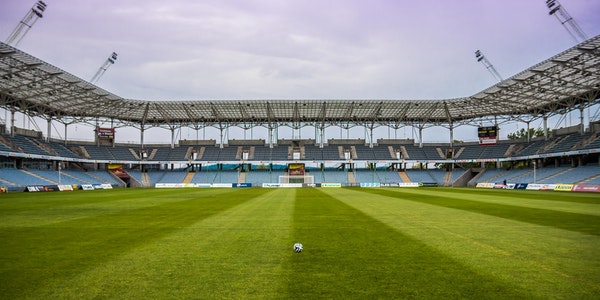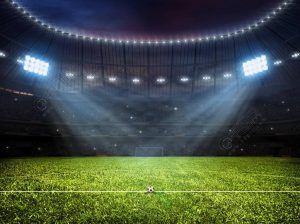(5) Environmental Impact:
Reduced Carbon Footprint:
Detail: Lower energy consumption and longer lifespan contribute to a reduced carbon footprint associated with electricity generation and waste disposal.
Impact: Choosing LED lighting supports environmental sustainability goals by conserving energy and reducing greenhouse gas emissions.
Example: By switching to LED lighting, stadiums and arenas can play a significant role in promoting eco-friendly practices and achieving energy efficiency certifications.
(6) Financial Savings Over Time:
Cost-Effectiveness:
Detail: While LED fixtures may have higher upfront costs than traditional lighting options, the long-term savings in energy and maintenance expenses outweigh initial investments.
Impact: Over the lifespan of LED lights, organizations can achieve substantial financial savings through reduced operational costs and improved efficiency.
Example: The return on investment (ROI) for LED lighting installations in sports venues and entertainment facilities is typically realized within a few years, leading to long-term financial benefits.
LED lighting demonstrates clear advantages over traditional lighting technologies in terms of energy consumption, efficiency ratings, heat emission reduction, longevity, maintenance savings, environmental impact, and overall cost-effectiveness. By choosing LED lighting solutions, sports venues and entertainment spaces can achieve significant energy savings, enhance sustainability efforts, and improve operational efficiency while providing superior illumination for events and activities. As technology continues to advance, LED lighting remains pivotal in driving energy-efficient practices and supporting sustainable development goals across various industries.
Longevity and maintenance cost reduction
Benefits for Sports Venues and Entertainment Spaces
- Extended Lifespan:
Longevity Compared to Traditional Lighting:
Detail: LED lighting fixtures have a much longer operational lifespan, typically lasting up to 50,000 hours or more.
Impact: This longevity far exceeds traditional lighting sources like incandescent bulbs or fluorescent tubes, which typically last 1,000 to 2,000 hours.
Example: In a sports arena, LED floodlights can operate for years without needing replacement, reducing downtime and maintenance disruptions during events.
- Reduced Replacement Frequency:
Minimized Maintenance Requirements:
Detail: Due to their extended lifespan, LED lights require less frequent replacement compared to traditional bulbs, reducing labor and material costs associated with maintenance.
Impact: Venue operators benefit from fewer maintenance cycles and reduced manpower required for bulb changes, resulting in operational savings.
Example: High-ceiling applications in arenas or theaters benefit significantly from LED lights, where accessing and replacing bulbs is costly and time-consuming.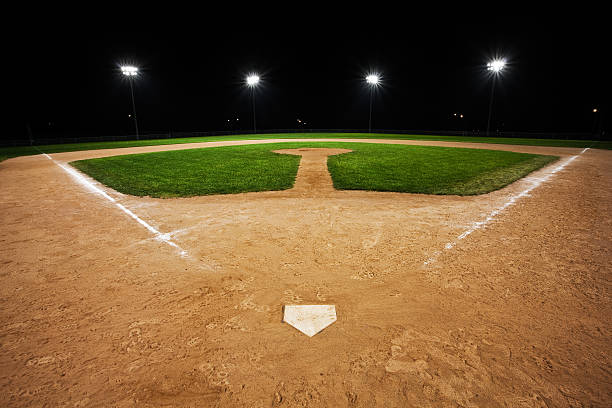
- Lower Maintenance Costs:
Labor and Material Savings:
Detail: LED lighting’s durability reduces the need for regular maintenance interventions such as bulb replacements and repairs.
Impact: This translates to lower labor costs and savings on replacement parts, contributing to overall operational efficiency and budget management.
Example: A stadium transitioning to LED lighting can save thousands of dollars annually in maintenance expenses, allowing resources to be allocated to other critical facility needs.
- Enhanced Reliability:
Consistent Performance Over Time:
Detail: LED lights maintain consistent brightness and performance throughout their lifespan, with minimal degradation compared to traditional bulbs that dim over time.
Impact: This reliability ensures that lighting levels remain optimal for events and activities, maintaining high standards of visibility and safety.
Example: In outdoor venues hosting night games or concerts, reliable LED lighting ensures continuous illumination without interruptions, enhancing the overall experience for attendees.
- Resistance to Shock and Vibration:
Durability in Challenging Environments:
Detail: LED fixtures are designed to withstand shock, vibrations, and temperature fluctuations better than fragile traditional lighting sources.
Impact: This durability makes LED lights ideal for sports venues and entertainment spaces where robust performance is essential amidst dynamic and demanding conditions.
Example: LED lighting on stadium facades or in areas prone to vibrations from crowds or equipment maintains stable operation, reducing the need for frequent replacements.
- Environmental Impact:
Sustainability Benefits:
Detail: Longer-lasting LED lights contribute to environmental sustainability by reducing waste from discarded bulbs and lowering carbon emissions associated with manufacturing and disposal.
Impact: Choosing LED lighting aligns with eco-friendly practices and supports green building certifications, enhancing the venue’s environmental stewardship.
Example: Sports facilities investing in LED technology not only save on maintenance costs but also demonstrate a commitment to sustainability, appealing to environmentally conscious stakeholders and patrons.
LED lighting’s extended lifespan and reduced maintenance requirements offer significant advantages for sports venues and entertainment spaces. By minimizing replacement frequency, lowering maintenance costs, enhancing reliability, and promoting sustainability, LED technology enables facilities to operate more efficiently while providing optimal lighting for events and activities. These benefits not only improve operational budgets but also enhance overall facility management and user experience, making LED lighting a preferred choice for modernizing and optimizing lighting systems in diverse venues.
Environmental benefits (reduced carbon footprint)
Advantages for Reducing Carbon Footprint
- Energy Efficiency:
Lower Energy Consumption:
Detail: LED lighting uses significantly less energy compared to traditional lighting sources such as incandescent bulbs and fluorescent tubes.
Impact: Reduced energy consumption translates directly into lower greenhouse gas emissions from electricity generation, contributing to environmental conservation.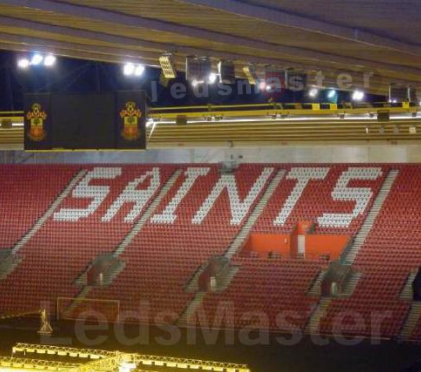
Example: A sports arena switching to LED lights can achieve substantial energy savings, reducing its carbon footprint and operating costs over time.
- Long Lifespan and Durability:
Extended Operational Lifespan:
Detail: LED fixtures have a much longer lifespan than traditional bulbs, lasting up to 50,000 hours or more under normal operating conditions.
Impact: Fewer replacements mean less waste from discarded bulbs and reduced manufacturing demand for new lighting products, lowering overall environmental impact.
Example: By using longer-lasting LED lights, venues minimize the disposal of hazardous materials associated with traditional bulbs, contributing to waste reduction efforts.
- Reduced Heat Emission:
Cooler Operation:
Detail: LED lights emit minimal heat compared to incandescent and halogen bulbs, which convert a significant portion of energy into heat rather than light.
Impact: Lower heat emissions reduce the energy required for cooling indoor spaces, further decreasing overall energy consumption and greenhouse gas emissions.
Example: Indoor sports facilities benefit from cooler operating conditions with LED lighting, enhancing comfort for athletes and spectators while conserving energy.
- Mercury-Free and Eco-Friendly Materials:
Non-Toxic Components:
Detail: LED lights do not contain mercury or other hazardous materials found in traditional lighting sources, reducing environmental risks during disposal.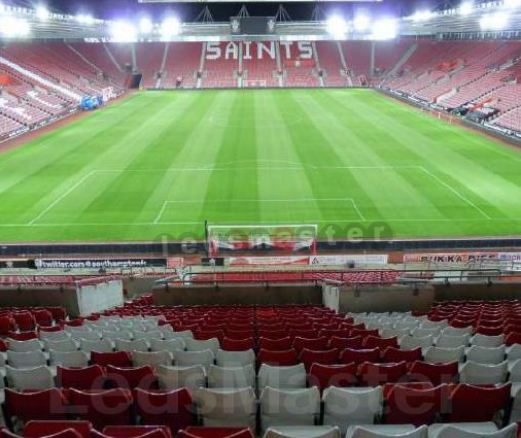
Impact: This makes LED technology safer for handling and recycling, supporting sustainable waste management practices and minimizing environmental pollution.
Example: Recycling programs for LEDs focus on recovering valuable materials and reducing landfill waste, promoting circular economy principles within the lighting industry.
- Compatibility with Renewable Energy Sources:
Integration with Green Power:
Detail: LED lighting systems are compatible with renewable energy sources such as solar and wind power, supporting sustainable energy initiatives.
Impact: By using LEDs in conjunction with renewable energy, venues can further reduce their carbon footprint and dependence on fossil fuels for electricity.
Example: Outdoor stadiums and arenas can leverage solar panels to power LED lights for night events, demonstrating a commitment to clean energy and environmental stewardship.
- Lifecycle Assessment and Efficiency Ratings:
Environmental Certifications:
Detail: LED products often meet stringent energy efficiency standards and certifications, indicating their environmental performance and sustainability credentials.
Impact: Choosing LED lighting helps facilities comply with green building regulations and achieve certification targets, enhancing their reputation as environmentally responsible venues.
Example: Sports facilities seeking LEED certification benefit from using LED lighting, which contributes to points in energy efficiency categories and overall sustainability assessments.
LED lighting offers significant environmental benefits by reducing energy consumption, minimizing greenhouse gas emissions, extending operational lifespans, promoting waste reduction, and supporting renewable energy integration. By adopting LED technology, sports venues and entertainment spaces can enhance their environmental sustainability efforts while enjoying cost savings and operational efficiencies. As global initiatives prioritize climate action and resource conservation, LED lighting remains pivotal in achieving energy-efficient lighting solutions that minimize environmental impact and contribute to a greener future.
I. Case Studies of LED Implementation
Stadiums:
Example of a major stadium (e.g., AT&T Stadium, Dallas)
Case Study Overview
AT&T Stadium in Dallas, Texas, serves as a prime example of a major sports venue that has successfully implemented LED lighting technology to achieve significant environmental benefits and operational efficiencies.
- Energy Efficiency and Savings:
LED Lighting Installation:
AT&T Stadium, home to the Dallas Cowboys, underwent a comprehensive lighting upgrade to LED fixtures across the entire facility.
Impact: The transition to LED lighting has resulted in substantial energy savings due to the efficiency of LED technology compared to traditional lighting sources.
Example: LED lights installed in the stadium’s seating areas, concourses, and playing field have reduced energy consumption by up to 60% compared to previous lighting systems. This equates to significant cost savings on electricity bills and supports the venue’s sustainability goals.
- Long Lifespan and Maintenance Reduction:
Extended Operational Lifespan:
LED fixtures at AT&T Stadium have a longer operational lifespan, lasting tens of thousands of hours before needing replacement.
Impact: This longevity minimizes the frequency of bulb replacements and reduces maintenance costs and labor hours required for upkeep.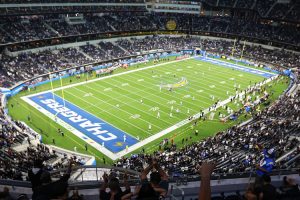
Example: The stadium’s maintenance team benefits from fewer disruptions during events and lower overall maintenance expenses, contributing to operational efficiency and cost management.
- Environmental Impact and Sustainability:
Carbon Footprint Reduction:
The implementation of LED lighting has significantly reduced AT&T Stadium’s carbon footprint by lowering energy consumption and greenhouse gas emissions.
Impact: By decreasing the stadium’s reliance on electricity generated from fossil fuels, LED lighting supports environmental sustainability initiatives and aligns with global climate action goals.
Example: LED technology enables AT&T Stadium to demonstrate leadership in sustainable practices within the sports industry, promoting eco-friendly operations and reducing environmental impact on a local and global scale.
- Enhanced Lighting Quality and Fan Experience:
Improved Visual Experience:
LED lighting at AT&T Stadium provides superior brightness, color clarity, and uniformity compared to previous lighting systems.
Impact: Spectators enjoy enhanced visibility of the playing field and entertainment performances, creating a more engaging and memorable experience for fans.
Example: The high color rendering index (CRI) of LED lights accurately showcases team colors, enhancing the atmosphere during NFL games and other major events held at the stadium.
- Community and Industry Leadership:
Role Model for Sustainability:
AT&T Stadium’s adoption of LED lighting sets a precedent for other sports venues and entertainment facilities seeking to improve energy efficiency and environmental stewardship.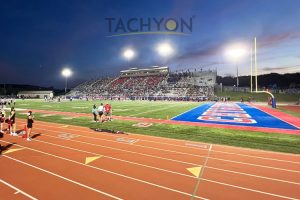
Impact: The stadium’s commitment to sustainable practices inspires stakeholders, fans, and industry peers to prioritize eco-friendly initiatives and embrace innovative technologies.
Example: By sharing its success story, AT&T Stadium encourages broader adoption of LED lighting among sports stadiums worldwide, driving positive environmental impact across the sports and entertainment sectors.
AT&T Stadium exemplifies the transformative impact of LED lighting technology in enhancing energy efficiency, reducing maintenance costs, lowering carbon emissions, improving lighting quality, and fostering sustainability within a major sports venue. By leveraging LED technology, AT&T Stadium not only enhances operational efficiency and fan experience but also demonstrates leadership in environmental responsibility, setting a benchmark for sustainable practices in the sports and entertainment industry. As stadiums continue to modernize their lighting systems, LED technology remains pivotal in achieving both economic savings and environmental stewardship goals on a global scale.
Specific improvements and feedback from athletes and fans
Enhancements in Performance and Experience
- Improved Visibility and Clarity:
Athlete Feedback:
Athletes at stadiums like AT&T Stadium in Dallas have noted significant improvements in visibility and clarity on the playing field under LED lighting.
Impact: Clearer visibility of the ball, players, and surroundings enhances performance and reduces the risk of injuries during fast-paced games.
Example: NFL players have praised LED lighting for reducing glare and shadows, allowing them to make quicker decisions and perform at their best under optimal lighting conditions.
- Reduced Glare and Eye Strain:
Fan Feedback:
Fans attending events at venues with LED lighting, such as AT&T Stadium, have reported reduced glare and eye strain compared to older lighting technologies.
Impact: Improved visual comfort enhances the overall viewing experience, enabling fans to enjoy games and events with greater clarity and focus.
Example: Spectators at concerts and sporting events appreciate the enhanced visibility of performers and players, contributing to a more immersive and enjoyable atmosphere.
- Enhanced Color Rendering:
Feedback from Broadcasters:
Broadcasters and media professionals covering events at LED-lit stadiums have highlighted improved color accuracy and vibrancy on broadcasts and streaming platforms.
Impact: High color rendering index (CRI) of LED lights ensures that televised images accurately represent team colors and event aesthetics, enhancing viewer engagement.
(To Be Continued)

